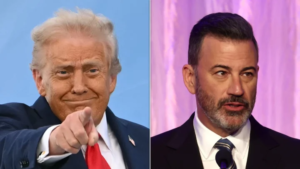U.S. Supreme Court Justice Elena Kagan sounded the alarm again last week about the court’s growing reliance on emergency orders, referred to as the “shadow docket.” She expressed her concern after the court’s conservative majority allowed President Donald Trump to halt $4 billion in foreign aid—despite a lower court ruling that the president is not allowed to hold back spending funds appropriated by Congress.
In her dissent, Kagan condemned the resort to the emergency docket, which dispenses with full legal briefs and oral arguments, to decide such a high-stakes case.
“We will decide cases of lesser moment with more process and deliberation,” Kagan maintained, highlighting that the case raised unprecedented issues that needed greater scrutiny.
The 6-3 conservative-majority Supreme Court has staunchly supported Trump’s initiatives since his January 20 inauguration. To date, the justices have addressed 23 of his policies via emergency opinions, siding with him entirely or partly in 21.
Expanding the Emergency Docket
At least six different legal tactics have been applied by the court to implement Trump’s policies, including
Identifying technical flaws in lower court judgments, such as dismissing appeals on grounds of lack of legal standing.
Applying the settled test for injunctions, predicting Trump would likely succeed in ongoing cases.
Issuing suggestions of overruling well-settling precedents limiting presidential powers.
Holding that certain lawsuits had been filed before the wrong courts.
Treating prior emergency rulings as binding precedent for lower courts.
In one case—Trump’s attempt to restrict birthright citizenship—hearing oral arguments before issuing an order that curtailed judges’ authority to enjoin federal policy nationwide.

These steps have enabled Trump to take sweeping measures—such as mass dismissals of federal employees, dismissal of agency staff shielded by law, deportation based on a centuries-old statute, and restricting trans military service—before they are legally decided. Critics argue that such steps enhance presidential power at the expense of the legislature and judiciary.
Bradley University law professor Taraleigh Davis explained the court’s approach has in effect “broadened the powers of the emergency docket without officially acknowledging it,” encouraging the administration to pursue controversial policies first and then defend them.
Critics Warn of Consequences
Legal scholars warn that the court’s willingness to approve Trump policies without full hearings can have irreversible consequences.
“These are not choices that perpetuate the status quo,” said Tulane University law professor Stephen Griffin. “They can cost your research to be unfunded, or your spouse to be imprisoned abroad.”
Judges in a few lower courts have even grumbled they were not expecting interim emergency orders to serve as binding precedent. Traditionally, such orders were viewed as temporary relief, not law-making orders.
The court has also signaled reversing a 1935 precedent that restricted presidents from removing independent agency officials without cause—after backing Trump’s removal of Democratic members from federal commissions.
Liberal Justices Push Back
The court’s three liberal justices—Kagan, Ketanji Brown Jackson, and Sonia Sotomayor—have consistently pushed back. Jackson likened the emergency docket to the comic strip game “Calvinball,” in which rules always shift.
We appear to have two [rules]: that one, and this administration always prevails,” Jackson wrote in dissent.
They warn the conservative majority is evading the judicial process intended to find the best interpretation of constitutional provisions in order to “make new law” by issuing emergency orders.
Conservative Justice Amy Coney Barrett weighed in on behalf of the practice, though, asserting blocking what may ultimately be held lawful executive orders injures a president.
Since Trump took office again, his administration has been hit with over 300 lawsuits opposing different policies. Few of them have reached the Supreme Court, and thus far, the conservative justices have mostly supported him.
Some analysts, such as NYU constitutional law expert Peter Shane, think the court is taking a deliberate pass on a head-on confrontation with Trump by giving him emergency latitude instead of issuing a final ruling he may ignore.
Meanwhile, the emergency docket has emerged as a powerful tool—one that is denounced as propping up Trump’s presidency at the expense of conventional checks and balances.




